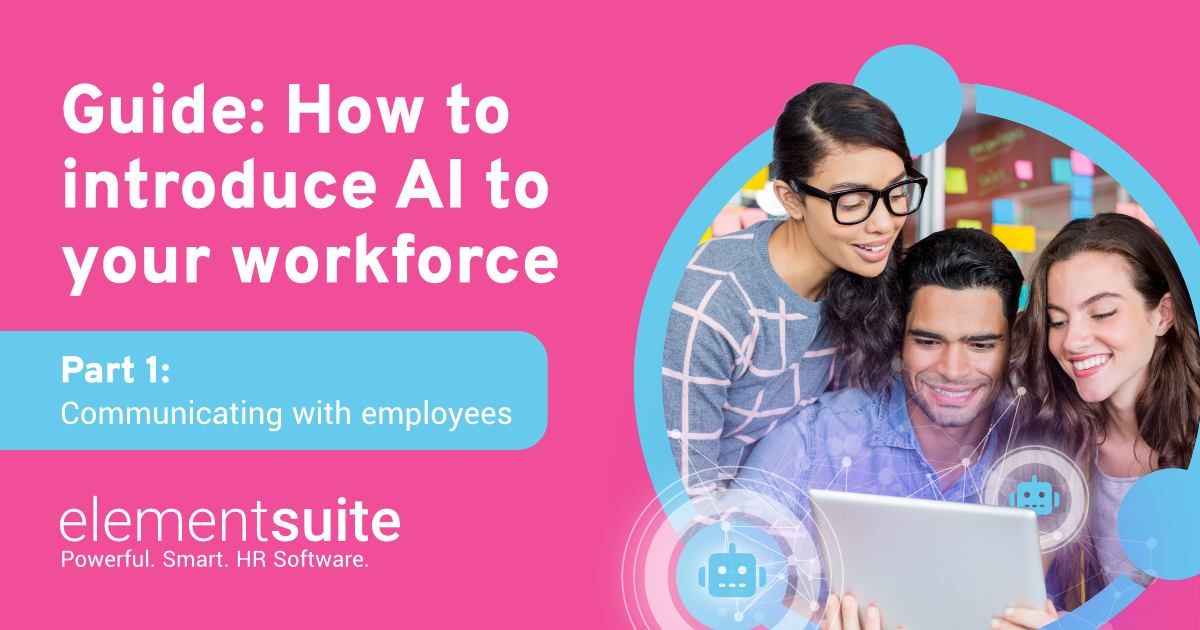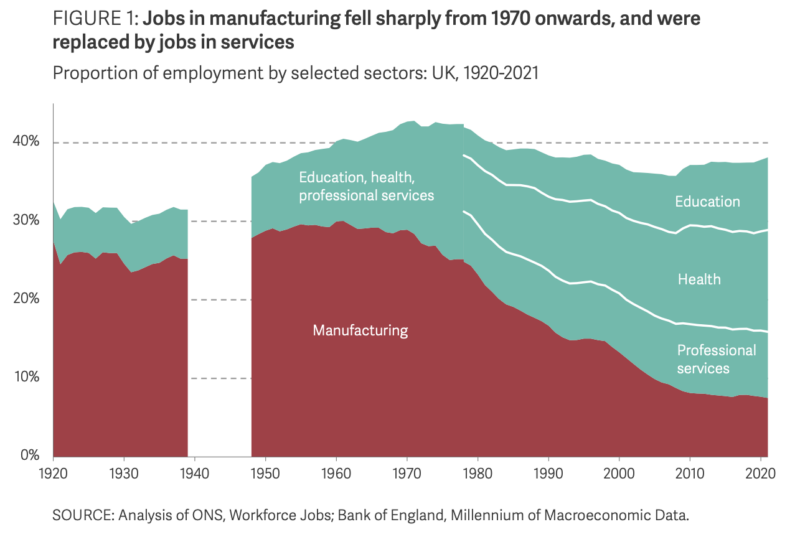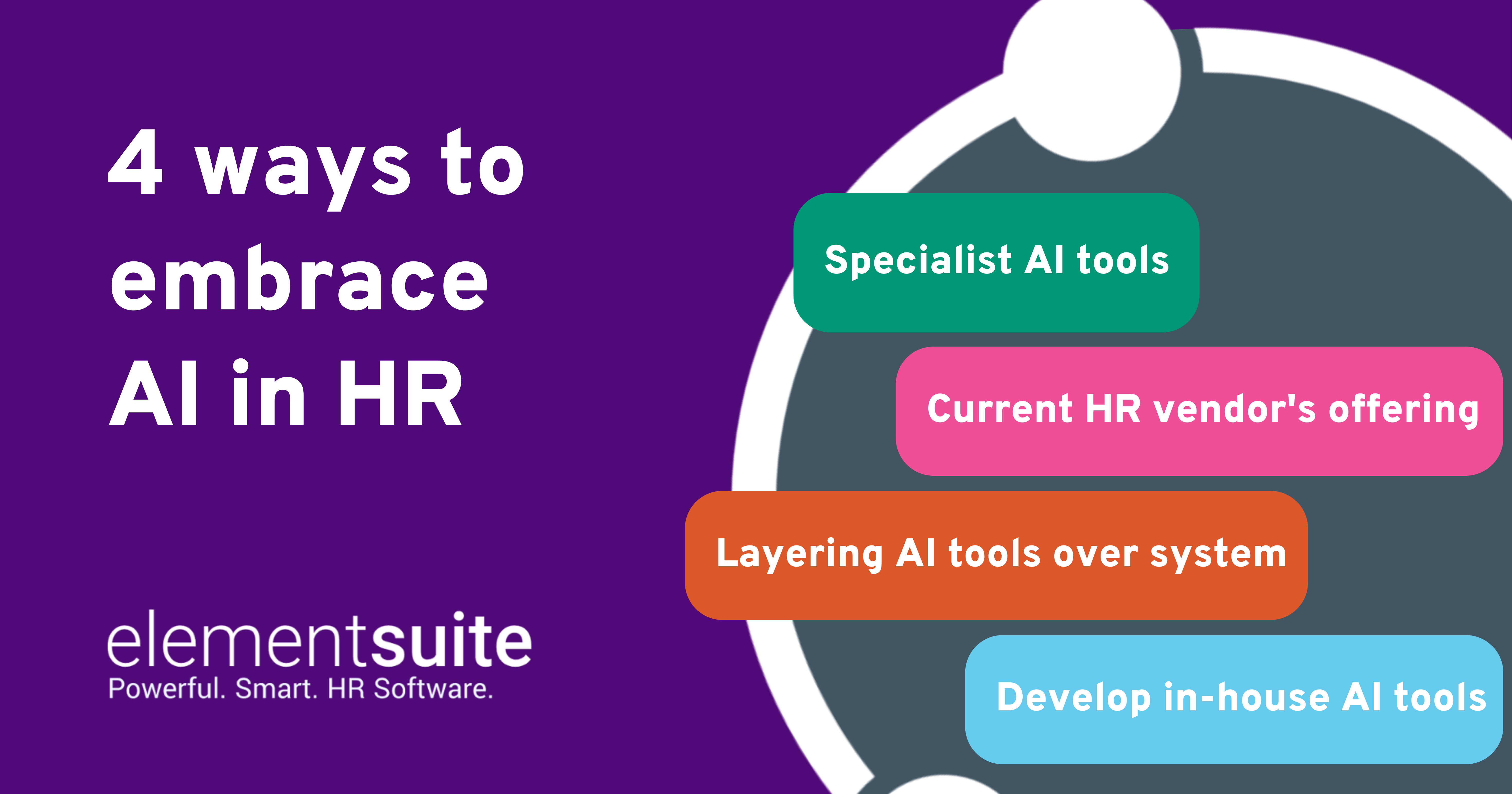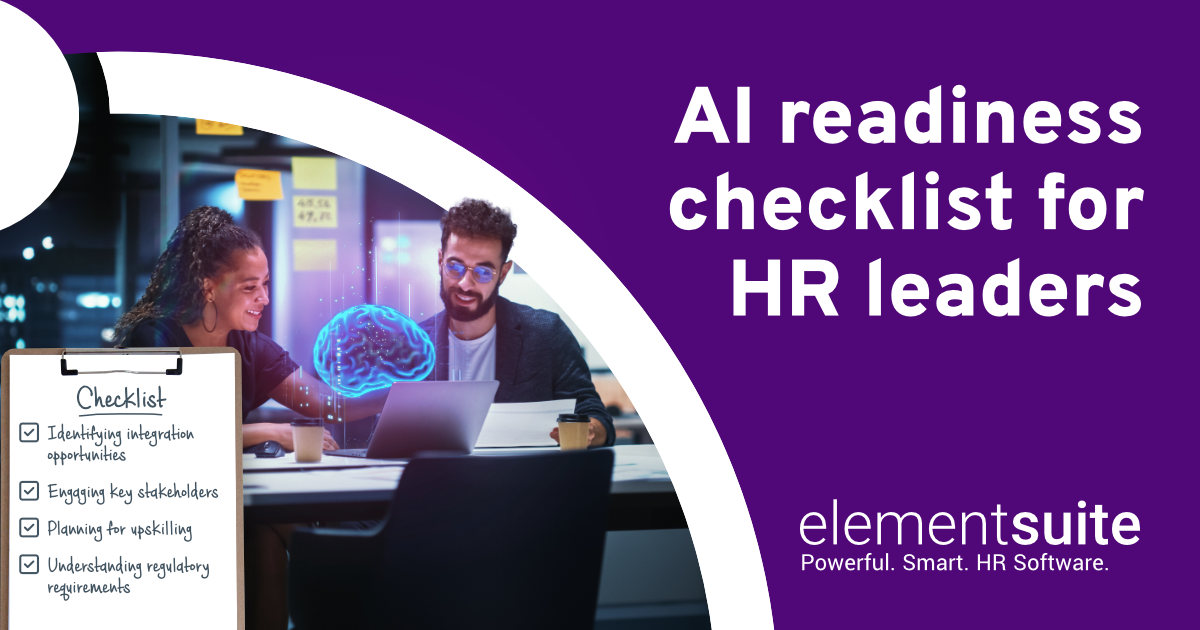Welcome to our 2-part guide on bringing AI into your organisation! In this first part, we’ll focus on the communication and governance to help you navigate the transition. After all, introducing new technology can feel like a big shift, so it’s essential to get everyone on board in the right way.
Part 1 will cover 2 key areas:
Communication and transition:
- The role of AI in a modern workplace
- The benefits of integrating AI into your organisational processes
- Educating employees and demystifying AI
- Clearly communicating the purpose and benefits
- Addressing concerns and fears head-on by encouraging collaboration between humans and AI
Governance and vendor selection:
- Focusing on augmentation, not replacement
- Establishing clear governance and ethics policies
- The 6 key questions to consider when looking at AI vendors:
- Continuously monitoring and evaluating AI implementation
In the second part (keep an eye out here for the release!), we’ll dive into the more technical side of things.
- Which AI tools should you consider?
- How do you go about laying them over your existing software?
- What’s the best way to work with your IT department to make sure everything runs smoothly?
- And, of course, we’ll cover how to check that your data privacy is rock solid.
Sign up to newsletter to make sure you don’t miss the next part in this series!
So, let’s get started with the communication and transition essentials, and before you know it, you’ll be ready to explore the techy details!
Communication and transition
Introducing AI requires more than just implementing new tools; it’s about guiding your team through the change. This section will explore how to effectively communicate the benefits of AI, address concerns, and create a collaborative environment where employees feel empowered to work alongside AI.
The role of AI in the modern workplace
AI is no longer a concept from the future; it’s already here, and it’s reshaping the way we work, particularly in HR. Whether it’s automating repetitive tasks or providing real-time data insights that support long-term workforce planning, AI is transforming how HR teams operate and how they deliver value to their organisations.
While we’re not quite at the level of The Jetsons or Star Wars droids, AI is already making strides in the workplace. Think less “R2-D2 whizzing around” and more smart software behind the scenes, handling tasks faster than you can say “beep boop.”
A recent report from McKinsey, “A New Future of Work: The Race to Deploy AI and Raise Skills in Europe and Beyond”, revealed that as much as 30% of hours worked could be automated by 2030 due to advances in generative AI, so it’s no surprise that 65% of HR professionals think that AI will affect their industry.
But introducing AI into organisations is no simple task.
The benefits of integrating AI into your organisational processes
So, why should organisations adopt AI in the first place, you might ask?
Think about all the manual work that can to pile up – endless paperwork, data entry, and time-consuming processes that take you away from the more meaningful parts of your job. AI can now take on a huge portion of those tasks, ensuring accuracy and efficiency while saving time.
Taking the example of HR departments, AI frees up HR teams to focus on more strategic, high-value activities that drive growth, like:
- improving employee engagement
- managing performance
- crafting better development programmes
- nurturing company culture instead of getting bogged down in tedious routine duties
But this shift isn’t just about doing things faster; it’s about doing things smarter. AI enables HR professionals to take a more proactive approach, using data to anticipate issues before they arise, such as potential staffing shortages or employee dissatisfaction. By handling the repetitive work, AI allows HR teams to prioritise what really matters – fostering a more engaged, motivated, and productive workforce and having a real impact in the bottom line.

Educating employees and demystifying AI
With a clear view of the benefits AI can bring, the next step is ensuring your team is on board. While the advantages are undeniable, it’s natural for employees to feel uncertain or even wary about how AI might impact their roles. That’s why demystifying AI is so important. To get the most out of AI, your team needs to fully grasp not only how it works but also how it will enhance their day-to-day tasks, making their work more efficient and rewarding. By creating a culture of understanding and openness around AI tools, you can address concerns early, helping your employees see AI as a tool that empowers them rather than a replacement for their skills.
Begin by breaking down how AI works in a simple, relatable way. Focus on the benefits it brings, like reducing manual, time-consuming tasks and improving accuracy. For example, consider the time a manager spends responding to employee emails about company policies, benefits, or leave balances. AI can handle these routine enquiries automatically, giving employees instant access to the information they need through a self-service platform. This not only saves the manager hours of back-and-forth communication but also ensures that staff always have accurate and up-to-date information. By highlighting practical advantages like this, you’ll help your team see how AI can make their day-to-day work easier and more efficient.
Take a look at these ‘Advantages of AI’ you can mention to employees:
- A 24/7 assistant:
- Employees can wave goodbye to those endless email chains with Managers and HR Admins with their questions being answered in a matter of seconds by an AI assistant. With a tool like ELLA, employees can even ask about matters on company policies and shifts, as the AI tool can retrieve information required while ensuring authentication and authorisation are prioritised.
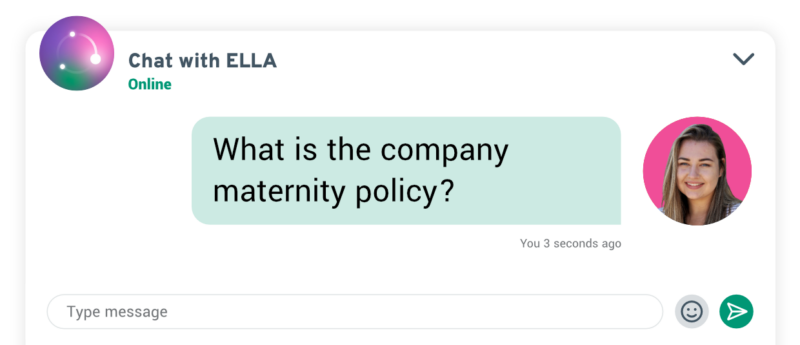
- Absences booked for you
- By simply asking an AI tool like ELLA, “please book me an absence for Tuesday 14th December”, employees can save time by having their absences booked for them without having to navigate to any other pages.
- Content generation
- Proof-reading emails, documents, etc. can be time-consuming. AI tools can help generate content from scratch and proof-read content for employees, helping save time.
- And so much more…
- We’ll be releasing an eBook full of use cases and prompts to help HR Admins, Managers, and Employees navigate how to use AI practically – sign up to our newsletter here so you don’t miss it!
Next, you’ll want to focus on the skills your employees will need to work alongside AI. This might include developing a basic understanding of how AI systems operate and how to interact with AI tools effectively.
Think back to when the internet was first introduced in the early 1980’s. Many feared that traditional roles, especially in areas like retail and customer service, would be made obsolete as digital tools and e-commerce took over. However, rather than eliminating these jobs, the internet transformed them. Employees learned new skills like managing online platforms, digital marketing, and customer support through email and live chat.
Entirely new roles emerged, such as social media managers, SEO specialists, and e-commerce coordinators. The same is true today. Technology may be augmenting some traditional jobs, but new roles are also being created that require skills that perhaps didn’t exist before.
Workshops or training sessions can play a big part in easing concerns and promoting AI adoption. By offering opportunities for hands-on learning, employees can gain confidence in using AI. And by encouraging open discussions, you can address any questions or fears they may have. The goal is to create a culture where AI is seen as an ally in their work—something that helps them become more efficient and capable, rather than a tool to be feared.
Don’t forget the ethical considerations that come with AI. While AI is a powerful tool, it must be used responsibly. You’ll need to educate your team about the ethical frameworks that guide its use, such as respecting privacy, avoiding biases in decision-making, and maintaining transparency. Helping your employees grasp these principles will build trust and ensure that AI is integrated in a way that aligns with your organisation’s values.
By educating your workforce and equipping them with the right skills, you can ensure that AI becomes a welcome and valuable addition to your operations. The key is to make AI feel like a tool that empowers employees, rather than something that undermines their roles.
Clearly communicating the purpose and benefits
If you want your team to get on board with AI, clear communication is key. You need to show them how AI will make their work easier, improve overall efficiency across the business, and lead to better outcomes for both employees and the company.
For frontline staff in industries such as hotels, restaurants or retail, AI can offer real, tangible benefits. Whether it’s automating repetitive tasks like handling customer queries, streamlining inventory management, or ensuring compliance with health and safety regulations, AI can significantly reduce the day-to-day pressures on your team.
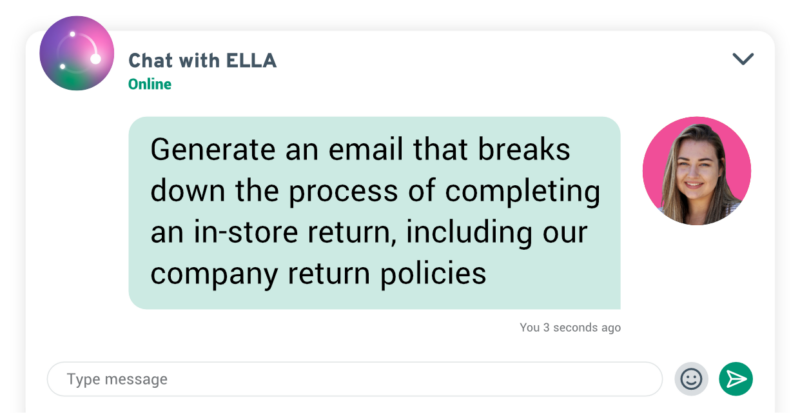
Ensure your communication highlights not just these practical benefits, but also how AI fits into the bigger picture – helping your business run more smoothly, improving customer service, and allowing staff to focus on higher-value tasks like interacting with customers or ensuring quality service. One effective way to communicate this is through your company newsfeed or internal communication platforms.
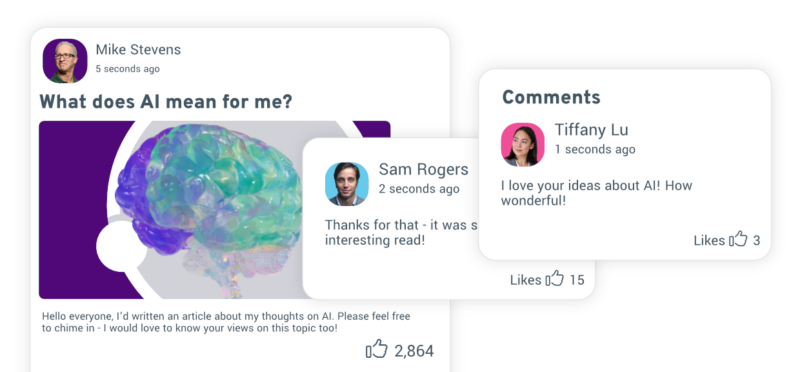
The company newsfeed can serve as a central hub where employees can stay informed and engage with updates about AI integration. This can be a space where you share success stories, answer common questions, and provide examples of how AI is already making a difference. For instance, you could post updates on how AI has streamlined inventory management or reduced the time spent answering routine customer queries, freeing up employees to focus more on customer interactions and improving service quality.
Employees can also use the newsfeed to ask questions or share their own experiences with AI tools, creating a two-way conversation that encourages engagement. By keeping communication open and accessible through a platform that employees already use daily, you help foster a sense of collaboration and involvement. This makes it easier for your team to see AI not as an abstract concept, but as a practical tool that directly enhances their work.
Encouraging staff to engage with posts—whether it’s through comments, polls, or Q&A sessions – ensures that everyone is on the same page. For example, you could post questions such as:
- “How has AI improved your daily tasks? Share your thoughts!”
- “Check out how AI has helped reduce manual inventory checks in our Cardiff store!”
- “Got questions about the new AI tools? Drop them in the comments below, and we’ll answer them!”
By creating a space where employees can see real-life applications of AI and actively participate in the conversation, you build a stronger understanding of how AI fits into the bigger picture and make the transition smoother for everyone involved.
Addressing concerns and fears head-on by encouraging collaboration between humans and AI
Let’s face it, AI can be scary for many employees. Concerns about job security or feeling replaced by technology are common, and it’s important to address these fears early on.
It’s crucial for HR to make it clear to frontline workers that AI is there to support them, not replace them. Offering opportunities for employees to upskill so they can work alongside AI effectively is key. When employees feel that their development is being prioritised, they are far more likely to embrace AI as a tool for growth and personal development, rather than as something to be feared.
A great way to address the concerns about AI threatening job security is by providing comprehensive training programmes that focus on building the skills needed to use AI tools. For retail workers, this could include training on how to interact with AI systems that assist with customer service, manage inventory, or even personalise shopping experiences for customers. AI can handle a lot of the repetitive tasks, but employees will need to know how to work alongside it to make the most of the technology.
Take a look at these examples prompts below:
- AI for routine task support
- “Can you handle these repetitive data entries for me?”
- Customer service assistance
- “Help me find a response for a customer asking about delivery options.”
- Data-driven insights
- “Show me trends in last quarter’s sales figures.”
- Training and skill development
- “Give me a refresher on the company’s new data privacy protocols.”
By presenting AI as a partner in their day-to-day tasks, HR can help employees feel more comfortable with the technology. Offering dedicated training sessions and clear communication about how AI can enhance their roles, rather than replace them, will further build confidence and ease concerns.
Tools such as elementsuite’s Learning and Development module can be an invaluable resource in this process. By using a platform like this, HR can deliver customised training that’s relevant to the specific needs of staff.
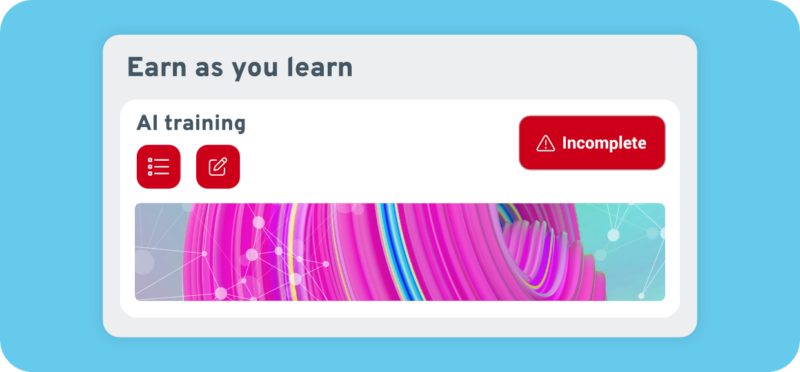
Governance and vendor selection:
Before diving into AI implementation, it’s essential to lay a solid foundation with clear governance and ethical guidelines. Setting these policies early on ensures that your AI strategy aligns with your organisation’s values, maintains transparency, and fosters trust among employees. This includes addressing critical aspects like data privacy, bias prevention, and accountability.
Additionally, choosing the right AI vendor is a crucial step. It’s not just about finding the most advanced solution, but about selecting a tool that fits seamlessly with your existing systems and supports your goals. To help you navigate this, we’ll share six key questions that can guide your vendor evaluation process, with a focus on finding AI solutions that augment your workforce, rather than replace it. And, as with any new technology, continuous monitoring is vital to ensure that the AI systems remain reliable, secure, and beneficial over time.
Focusing on augmentation, not replacement
As a result of turbulent economic weathers, matched with the changing dynamics of the workforce with technological advancements and the rise of independent workers, business leaders across the globe are being pressured to reduce operational costs. And this often results in the reduction of headcount as a quick fix.
However, research suggests that, in fact, these cost-cutting measures do not actually result in any profitability or beneficiary financial outcomes. Instead, it has been found that it can have the complete opposite effect. The same research found that downsizing has actually been found to result in a lack of employee trust and commitment, increased turnover costs, and can even damage an organisation’s public reputational capital.
Yes, some roles may eventually become redundant due to automation, but this should not be the only consideration when restructuring talent. To avoid the loss of institutional knowledge and retain employees’ trust HR must think carefully about how they can move people within the company and utilise their skills and expertise in different areas.
Taking the HR department itself as an example, AI can augment human capabilities such as administrative tasks, presenting an opportunity for HR professionals to expand their skills and become even more valuable strategic partners within the organisation.
In short, organisations need to redirect their focus on redeployment and cross-skilling rather than solely relying on reducing headcount as a solution.
The goal is to use AI to augment human capabilities – helping your employees do their jobs better and faster, not replacing them altogether.
As the custodians of the workforce, HR must start identifying these future skills needs now and begin building them internally through personalised training pathways, should they want to remain strong and competitive.
First, you need to understand the current state of the workforce. There are many ways to do this, from asking employees to claim their skills through employee surveys to assessing job descriptions to evaluating performance management reviews.
You should also have a record of your employees’ skills on your HR system, allowing them to update any qualifications, skills, and experiences within their own record at their own pace. This will give you a clear picture of your organisation’s current skills and expertise, allowing you to identify any skills gaps or areas for development.
Once you have an understanding of your current workforce, it’s time to start looking towards the future. What new technologies, processes, or trends are emerging in your industry? How will they impact your business, and what skills will be needed to adapt and thrive? Start off with your own department. Using a heatmap, identify what tasks can be automated with AI within the HR department and process.
By using a heatmap to visualise HR operating Model on a page, and RAG (Red/Amber/Green), your levelled HR functions, you can visually identify and highlight the tasks and processes that consume excessive time. These highlighted areas represent prime opportunities for AI-driven optimisation.
For instance, as shown in this example HR department heatmap, tasks such as CV screening, scheduling interviews, and managing routine employee queries can be marked as high-priority targets for AI implementation.
Organisations can significantly enhance efficiency by focusing on these areas, allowing HR professionals to dedicate more time to strategic initiatives such as talent development, employee engagement, and organisational planning.
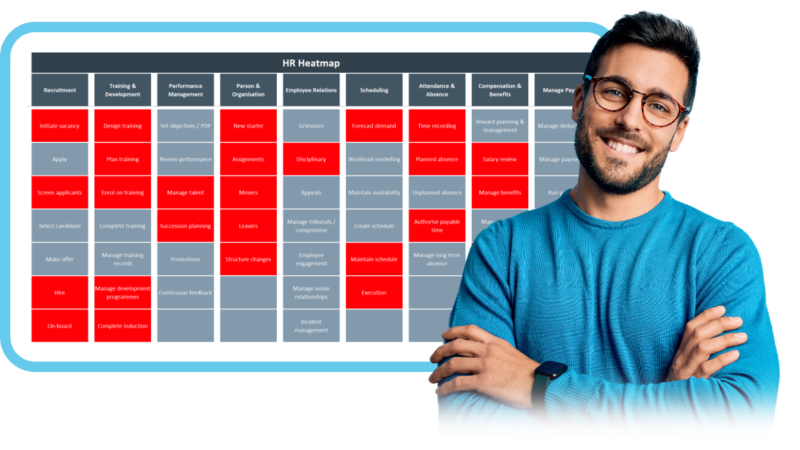
But while AI is a powerful tool, it must be used responsibly. You’ll need to educate your team about the ethical frameworks that guide its use, such as respecting privacy, avoiding biases in decision-making, and maintaining transparency. Helping your employees grasp these principles will build trust and ensure that AI is integrated in a way that aligns with your organisation’s values.
Workshops or training sessions can play a big part in easing concerns and promoting AI adoption. By offering opportunities for hands-on learning, employees can gain confidence in using AI. And by encouraging open discussions, you can address any questions or fears they may have. The goal is to create a culture where AI is seen as an ally in their work—something that helps them become more efficient and capable, rather than a tool to be feared.
By educating your workforce and equipping them with the right skills, you can ensure that AI becomes a welcome and valuable addition to your operations. The key is to make AI feel like a tool that empowers employees, rather than something that undermines their roles.
Establishing clear governance and ethics policies
AI brings a lot of benefits, but with great power comes great responsibility. It’s essential for HR to set up clear governance and ethics policies for how AI will be used in your organisation. Not only does this protect your employees’ data, but it also ensures transparency and fairness in how AI tools are applied across the board.
Governance and ethics policies should outline how employee data will be handled, what AI will be used for, and how you’ll ensure compliance with data protection regulations. Having these policies in place helps build trust with your team, reassuring them that AI is being used responsibly and ethically.
But this requires HR to have a clear understanding of their AI tool’s data privacy policies.
If you are introducing external AI tools into your organisation, it is crucial to consider how your data is classified and managed. Ensuring that users have appropriate authentication and authorisation to access data is crucial, especially when dealing with personally identifiable information (PII), Intellectual Property (IP), and other confidential company information.
It’s important to know that some AI tools (e.g. free versions of ChatGPT) may use your data to train their models. This means that any information inputted into the system could potentially be accessed by other users, raising significant privacy and security concerns. For instance, employees might inadvertently gain access to sensitive information such as colleagues’ salaries, private business policies, and other confidential details.
Numerous cautionary tales of businesses encountering issues due to improper use of AI tools exist. Ensuring robust data governance and privacy measures are in place is essential to mitigate these risks.
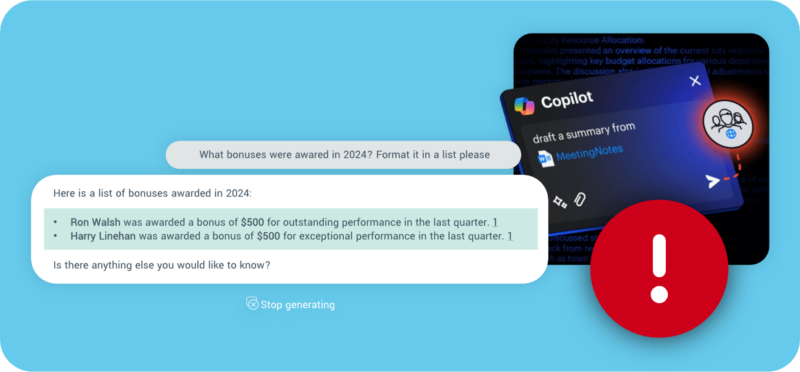
By carefully selecting AI tools that prioritise data security and implementing strict access controls, HR professionals can harness AI’s benefits while safeguarding sensitive information.
There are 6 key questions to consider when looking at AI vendors
When it comes to bringing AI into your organisation, choosing the right vendor is crucial. It’s not just about finding the most advanced technology—it’s about ensuring that the solution aligns with your business needs, values, and security requirements. Before you make a decision, there are some essential questions you should be asking AI vendors to ensure you’re making a well-informed choice.
From understanding how their models work to ensuring data privacy and security, these questions will help you gauge the reliability and suitability of different AI solutions. Plus, selecting a tool that seamlessly integrates with your existing HR systems will ensure a smoother transition and minimise disruptions. For instance, tools like ELLA (elementsuite Large Language Assistant) are designed to work within a dedicated security environment, offering robust data protection and peace of mind.
So, it’s important to ask the following:
- What model does the solution use?
- How is the model trained?
- How is your dataset used in training?
- Are the outcomes of the solutions explainable?
- How do you ensure the outcomes are verified and repeatable?
- Does the model have authentication and authorisation?
When layered over existing HR systems, AI tools like ELLA can ensure peace of mind regarding data security. ELLA operates within your dedicated, private security environment, guaranteeing that data is kept safe and confidential. This approach embeds AI within your existing HR platform, ensuring that sensitive information is shielded from external threats and unauthorised access.
Book a free live demo of ELLA today
Continuously monitoring and evaluating AI implementation
Introducing AI into your organisation isn’t a one-time project; it’s an ongoing journey. Once AI is implemented, you’ll need to continuously monitor and evaluate its performance to ensure it’s delivering the results you expect. AI tools can evolve, and your business needs might change, so it’s crucial to regularly check that your AI systems are aligned with your goals.
elementsuite’s Dashboards and Reporting features offer real-time insights, providing a clear, data-driven view of the impact AI is having on key tasks. Whether it’s monitoring employee engagement, tracking recruitment effectiveness, or analysing time saved through automation, these dashboards allow you to visualise AI’s performance in real-time.
This wealth of data means you can quickly identify areas where AI is excelling, as well as where it may need adjustments or fine-tuning. For instance, if AI is being used to handle employee queries, the dashboard can show metrics like response times, common queries, and employee satisfaction levels. If the data reveals any bottlenecks or areas where efficiency is dropping, you can make the necessary adjustments swiftly, whether that’s reconfiguring the AI tools or providing additional training to staff.
Furthermore, these reporting tools allow HR professionals to ensure that AI is aligning with broader organisational goals. By tracking key performance indicators (KPIs), you can ensure that AI’s implementation continues to support your business objectives – whether that’s improving employee satisfaction, reducing manual tasks, or optimising resource allocation. In short, these insights help ensure that AI is always working for you, and not just functioning in the background. If something isn’t performing as expected, you’ll know immediately, allowing for proactive changes rather than reactive fixes. This level of transparency is essential to maintaining trust in AI’s role within your HR processes and ensuring its continuous alignment with your evolving business needs.
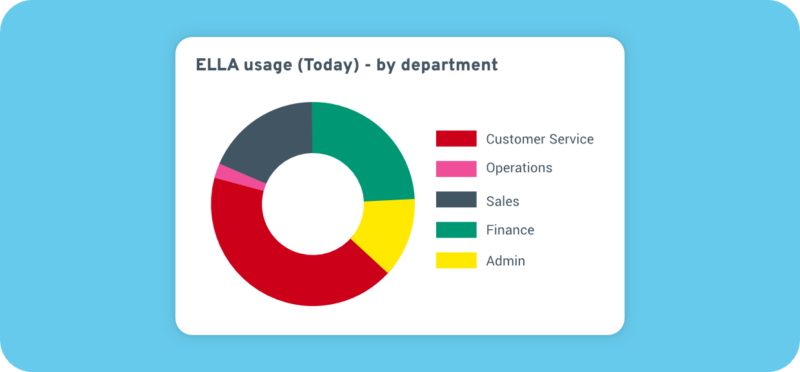
Conclusion
By embracing AI and approaching it with the right mindset, you can unlock new opportunities for your HR team. AI isn’t just about making things faster or easier – it’s about enabling you to focus on what really matters: your people. Whether it’s automating administrative tasks, providing 24/7 support, or offering data-driven insights for workforce planning, AI can be your best ally in creating a more efficient, engaging, and forward-thinking workplace.
Now that you know the potential AI holds, it’s time to start thinking about how to introduce it to your team. Take it step by step, educate your employees, and show them the tangible benefits AI will bring. With a well-planned approach and a focus on collaboration between humans and AI, your workforce will be ready for the future.

